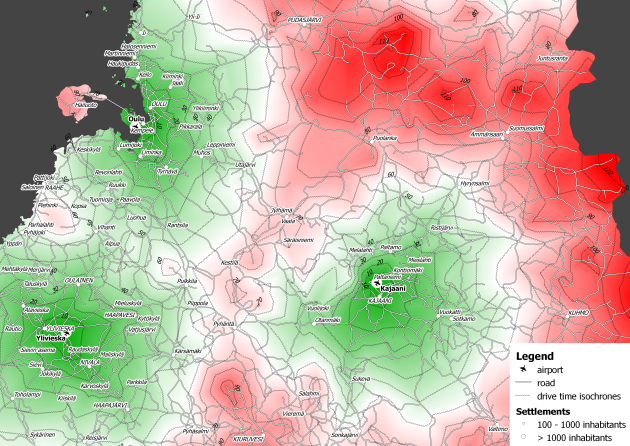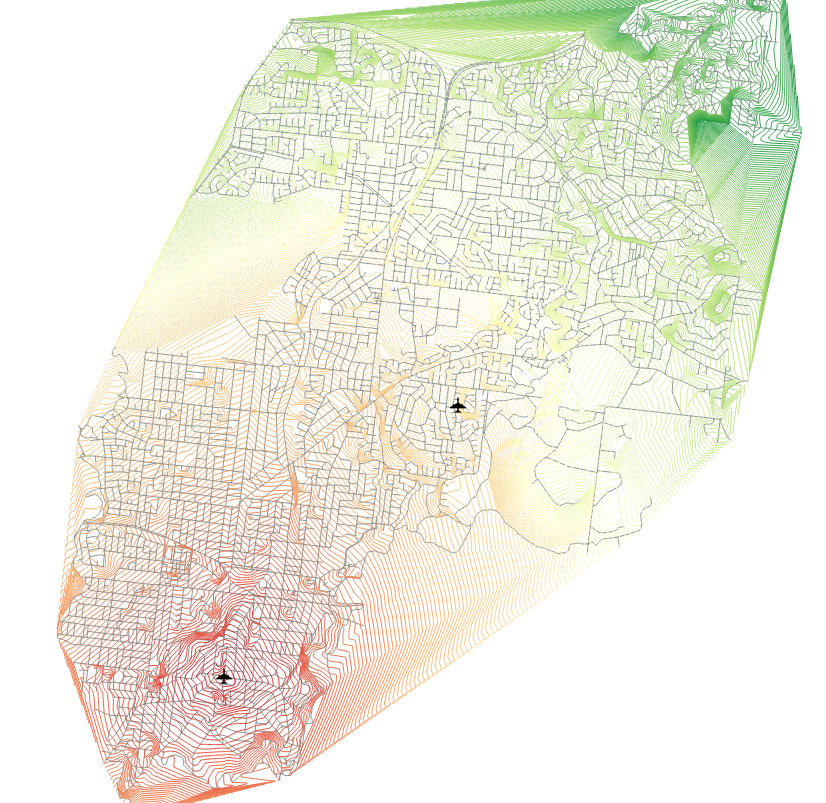I am trying to create drivetime isochrones from multiple nodes with a routable road network. What I am trying to achieve is a visualisation that looks something like this.

This was created with Qgis + python - Source (http://planet.qgis.org/planet/tag/drive%20time%20isochrones/)
I have managed to work out the drive time isochrone from one node using this example using the network cost calculator (Thanks to the Calculating the emergency response travel time example (https://knowledge.safe.com/articles/Samples_and_Demos/Calculating-emergency-response-travel-times))


However I am not sure sure how to progress from here as the network cost calculator does not work with multiple source input.
I would appreciate if anyone can shed any light on this problem.
Regards,
Matt



